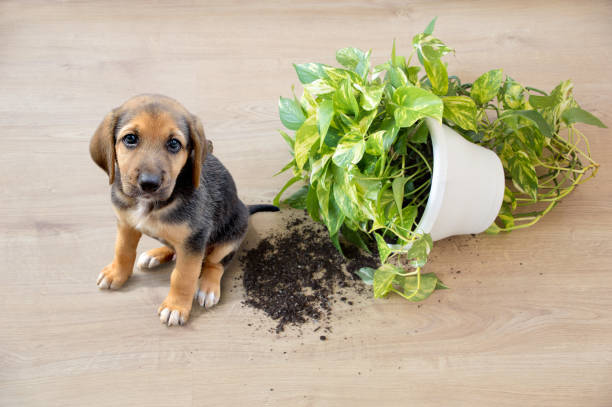The Art of Housebreaking: A Step-by-Step Process
Housebreaking, commonly referred to as potty training, is an essential phase for every pet parent. It sets the foundation for a clean home environment and establishes a routine for pets. Housebreaking isn’t just about teaching your pet where to relieve themselves; it’s about building trust, understanding, and patience between you and your furry friend.
- Understanding the Needs of Your Pet: Every animal is different. Dogs may require more frequent outings compared to cats, who can be trained to use a litter box. It’s imperative to understand the needs and behaviors of your pet.
- Consistency is Key: Stick to a strict schedule. For instance, puppies typically need to go out after eating, waking up, or playing. By adhering to a regular schedule, you condition them to understand when it’s time to relieve themselves.
- Use Positive Reinforcements: Every time your pet follows the rules, reward them with treats or praise. This reinforces the behavior you want to see.
- Choose a Specific Spot: Designate a particular area for your pet to do their business. Over time, they will associate that spot with relieving themselves.
Challenges in Housebreaking and How to Overcome Them
Despite best efforts, there can be hiccups along the way. Some of the common challenges include:
- Accidents in the House: Especially in the initial stages, accidents can happen. It’s crucial not to punish the pet, but instead, clean up promptly and redirect them to the correct spot.
- Refusal to Follow Schedule: Sometimes, pets may refuse to go out or use the litter box. In such cases, consider if there’s an external factor causing distress or seek advice from a vet.
- Medical Issues: If your pet frequently has accidents, it might be indicative of a medical problem. It’s always best to consult with a vet in such instances.
Insurance Coverage During the Housebreaking Period
Housebreaking can come with its fair share of accidents – from chewed furniture to potential injury. It begs the question: does insurance cover these damages?
Pet Damage and Homeowner’s Insurance
Typically, standard homeowner’s insurance policies may not cover damages caused by pets. These are often categorized under preventable damages. However, some policies might offer additional riders or endorsements that provide coverage for pet-related damages. It’s crucial to read the policy details or consult with your insurance agent.
Liability Coverage for Injuries Caused by Pets
If your pet injures someone during the training process, the liability portion of your homeowner’s insurance might provide coverage. This is especially relevant for dog owners, as even a playful pup can unintentionally cause harm.
On the topic of pet-related concerns, another essential consideration for pet parents is understanding what’s covered under pet insurance. In connection with this, it’s beneficial to grasp the concept of What Are Pre-Existing Conditions for Pet Insurance. This information will equip you with the knowledge to ensure that your pet receives the best care, even in situations unrelated to housebreaking.
The Benefits of Investing in Pet Insurance Early On
- Financial Security: Vet bills can be costly. With insurance, a significant portion of the bills can be covered, ensuring that your pet gets the necessary treatment without straining your finances.
- Comprehensive Care: Pet insurance can cover a range of treatments, from preventive care to surgeries. This means your pet gets the best care available.
- Peace of Mind: Knowing that you’re equipped to handle medical emergencies gives pet parents peace of mind. It’s one less thing to worry about in the grand scheme of pet parenting.
Conclusion
Housebreaking is a rite of passage for every pet and their owner. While it comes with its challenges, the rewards of a well-trained pet are immeasurable. Coupled with the safety net of insurance, both for potential damages during training and the overall health of your pet, it ensures a harmonious and secure coexistence. Being well-informed about these aspects ensures a smoother, more enjoyable journey in the world of pet ownership.












